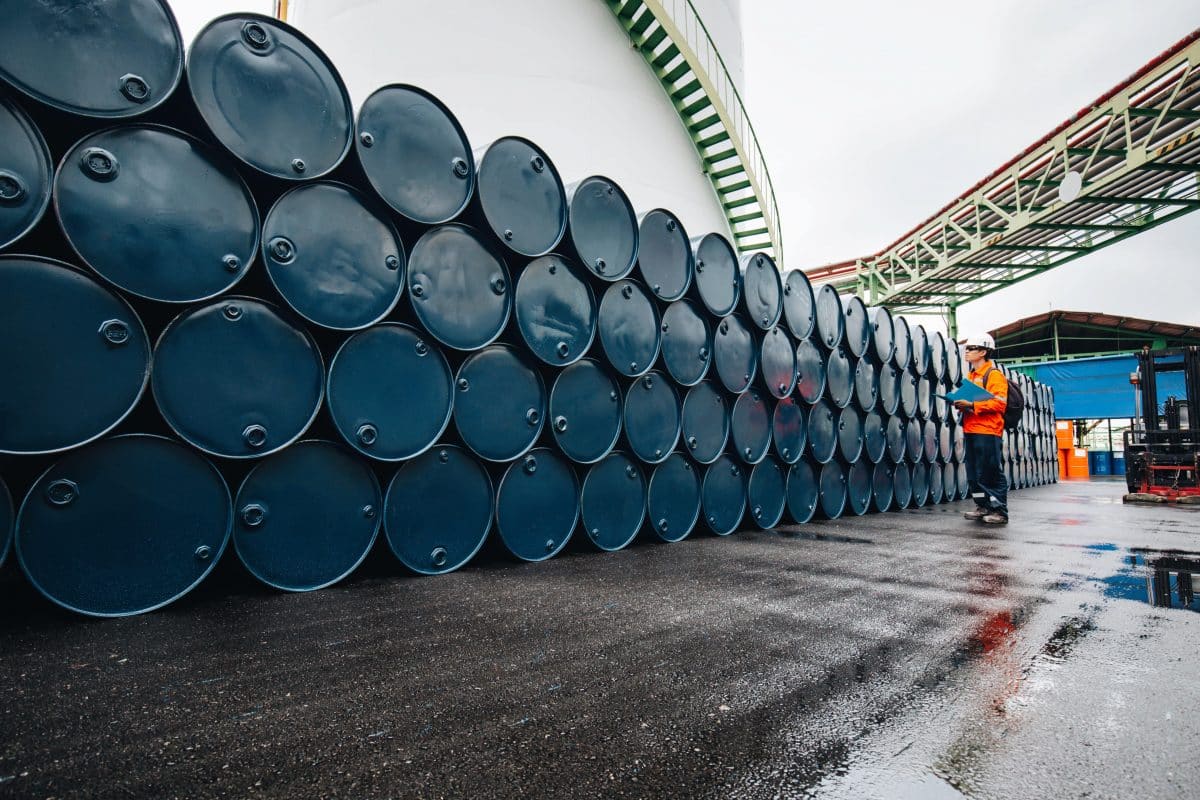Fast forward five years, and all seems to have gone the wrong way. The mojo is certainly gone. Exxon is not only again the largest US oil company, but its market value nearly doubles its competitor. Worse, Exxon has entangled Chevron in a long arbitration battle that could derail a make-or-break $60-billion-plus deal. Wirth, long admired, is now questioned. Rivals whisper his job may be on the line.
Mike Wirth became the king of Big Oil on Oct. 7, 2020. That was the day the chief executive officer of Chevron Corp. elbowed out archival Exxon Mobil Corp. to become America’s largest oil corporation by market value.
Fast forward five years, and all seems to have gone the wrong way. The mojo is certainly gone. Exxon is not only again the largest US oil company, but its market value nearly doubles its competitor. Worse, Exxon has entangled Chevron in a long arbitration battle that could derail a make-or-break $60-billion-plus deal. Wirth, long admired, is now questioned. Rivals whisper his job may be on the line.
The 64-year-old American chemical engineer is on a charm offensive to prove naysayers wrong. “The portfolio is stronger than it’s been,” he tells me in an hour-long interview. “This is the comeback.”
The path to redemption isn’t easy, but having listened to Wirth’s arguments, as well as spoken to multiple shareholders, bankers and analysts over the last few weeks.
To be fair to Wirth, his company is far from suffering the existential crisis its critics claim. In the third quarter, it returned to shareholders a record high $7.7 billion via dividends and share buybacks. Its stock has recovered too: At close to $160 per share, Chevron is up more than 10 per cent over the last year. Speaking from his office on the outskirts of San Francisco, days before Chevron relocates its headquarters to Houston, Wirth painted a rosy outlook because, as he puts it, Chevron has promised investors to increase its free cash flow by 10 per cent each year. The target seems achievable; if it delivers, the mojo will return.
Speaking from his office on the outskirts of San Francisco, days before Chevron relocates its headquarters to Houston, Wirth painted a rosy outlook because, as he puts it, Chevron’s cash generation compared to its spending is at an “inflection” point… If oil prices stay above $70 a barrel, it should enjoy a cash bonanza from 2025 as several projects start pumping, allowing the company to move into harvest mode. Chevron has promised investors to increase its free cash flow by 10 per cent each year….The target seems achievable; if it delivers, the mojo will return.
Yet, the challenges abound. Wirth inherited a troubled legacy when he became CEO in 2018. Under his predecessor, John S. Watson, Chevron had become a byword for late and over-budget mega-projects. Capital spending jumped from less than $20 billion annually before 2010 to about $40 billion in 2013, 2014 and 2015. Watson famously justified the splurge with a new vision: $100-a-barrel was the new $20-a-barrel.
Wirth inherited a troubled legacy when he became CEO in 2018. Under his predecessor, John S. Watson, Chevron had become a byword for late and over-budget mega-projects. Capital spending jumped from less than $20 billion annually before 2010 to about $40 billion in 2013, 2014 and 2015. Watson famously justified the splurge with a new vision: $100-a-barrel was the new $20-a-barrel.
Saudi Arabia had other plans, however. In late 2014, the kingdom launched a price war to halt the expansion of the US shale industry. Oil prices cratered to less than $30 a barrel. Chevron was left hanging out to dry. Wirth slashed spending and told investors the old days wouldn’t come back. Some were skeptical, but he delivered. Little by little, shareholders regained confidence. Then, in 2019, Wirth attempted to buy rival Anadarko in a deal valued at $50 billion, including debt. But Occidental Petroleum Corp. counterbid at $57 billion with the help of Warren Buffett. Rather than start a bidding war, Wirth walked away, pocketing a $1 billion breakup fee. It was the move that consolidated his appeal on Wall Street: He put financial common sense above ego.
All that Wirth needed to do to remain Wall Street’s favorite was rinse and repeat: keep costs under control, deliver projects on time and meet oil production targets. “Repetition is reputation,” as veteran oil analyst Paul Sankey likes to put it.
But Chevron didn’t, and Wall Street was merciless. The first setback was the expansion of the Tengiz project in Kazakhstan, the company’s crown jewel. When announced in 2016, it was meant to cost $37 billion and see its first oil in 2022; now, now, the crude won’t flow until next year, and the cost has ballooned to over $45 billion. Wirth admits he dropped the ball, allowing a culture of “optimism” that overlook the challenges.
“We were not — and I was not — asking the right questions,” he says. “I was not in contact with the field team as frequently as I should have been.” For Wall Street, it was déjà vu of the years when spending went unchecked.
The second setback was in Chevron’s backyard — the Permian region that’s the epicenter of the US shale revolution. Wirth had set a lofty target of pumping one million barrels a day by 2027, but in 2022 and 2023, the company struggled. With hindsight, it was a minor wobble as production is now again on track. But, Chevron didn’t explain itself at the time, putting off some investors.
Yet these setbacks pale in comparison with the third: the ongoing acquisition of Hess Corp. for $60 billion, including debt. The deal, announced in 2023, is the boldest that Wirth has attempted and would give Chevron a stake in a prized series of oil fields off the coast of Guyana, the Latin American nation bordering Venezuela and Brazil. The problem? Exxon owns a large chunk of the very same oilfields and claims it has the right to bid for them first.
Exxon, Chevron and Hess tried to resolve their differences in private, but the case is now going into arbitration in June, with a ruling likely in July or August. For many in the industry, Exxon, by delaying the Chevron-Hess deal at least one year, has already won — even if it ultimately losses the arbitration.
Still, everyone faces risks, even Exxon, and as the arbitration approaches, I believe the incentive to reach an out-of-the-court deal increases. Wirth disagrees: “Why would you do something now that you shouldn’t get done earlier?” He may be ultimately right, but that’s of little help for shareholders now. Today, investors don’t know what they are buying in Chevron. Are they purchasing shares in a future Chevron-Hess? Are they buying into a Chevron that fails to buy Hess and rushes into a standalone Chevron that carries on without further deals?
All those options have pros and cons — but above all, they have uncertainty. If one believes that Wirth will prevail in arbitration, buying Chevron today is a no-brainer. But if he doesn’t, one must put a lot of faith that the CEO wouldn’t rush into an expensive M&A deal to offset the loss of Hess.
“The standalone Chevron story is very, very strong,” Wirth says. “So even in the case where the transaction doesn’t close, which we don’t believe is going to happen, I think our track record says we wouldn’t go out and just throw money at something.”
But it’s hard to see how Chevron wouldn’t search for an acquisition if it doesn’t get Hess, although Wirth can probably do it on his own terms and time, without overpaying. Without that extra something, investors would question the growth of Chevron beyond the next few years. The Permian is a great story, but production there is expected to plateau in 2027; Tengiz is now a superb narrative for 2025, 2026 and 2027, but as time goes, shareholders will start asking questions about the renewal of thof the oilfield’s contract, set for 2033. Buying Hess solves these questions, hence why it’s so important.
Wirth has a point when he insists that Chevron is a better company than naysayers portray. Above all, it’s a cash machine. Between 2011 and 2014, Chevron generated, on average, $3.9 billion in free cash flow per year with Brent crude averaging nearly $110 a barrel. Last year, Chevron produced five times more free cash flow — nearly $20 billion — despite Brent crude trading at $80 a barrel. With a leverage ratio around 12 per cent, which is likely to drop into the single digits in the fourth quarter thanks to asset sales, Chevron can take on debt to sustain dividends and buybacks if oil prices sag. In the past, the company has boosted iits leverage to 20 per cent to 25 per cent during down cycles. Funding payouts with debt is risky, however, so Chevron should consider lowering its buybacks if oil prices fall below $70 a barrel. The company is currently buying back its shares atat a pace of $17 billion annually, near the upper end of its $10 billion to $20 billion annual guidance.
That financial firepower, alongside Wirth’s reputation as an executive who would walk from a deal rather than overpay, is the best antidote to skeptical investors. Chevron is owning its mistakes, and that’s a first good step. Now, it needs to show it’s learned the lessons.
By: Javier Blas ,Bloomberg / 12 November, 2024.









